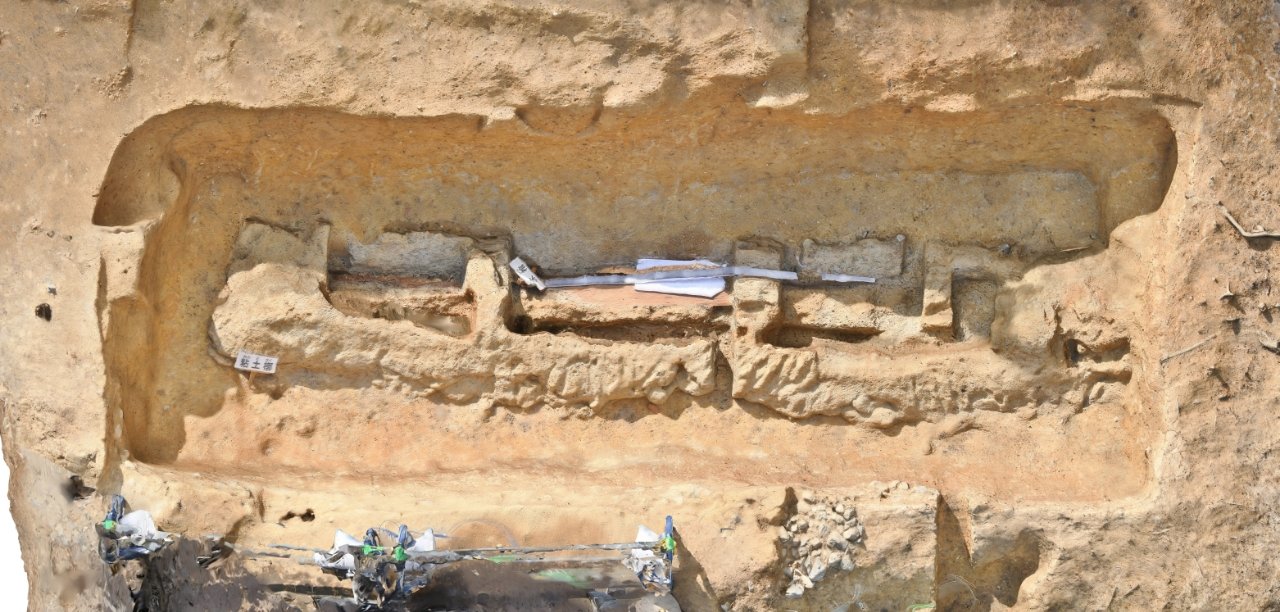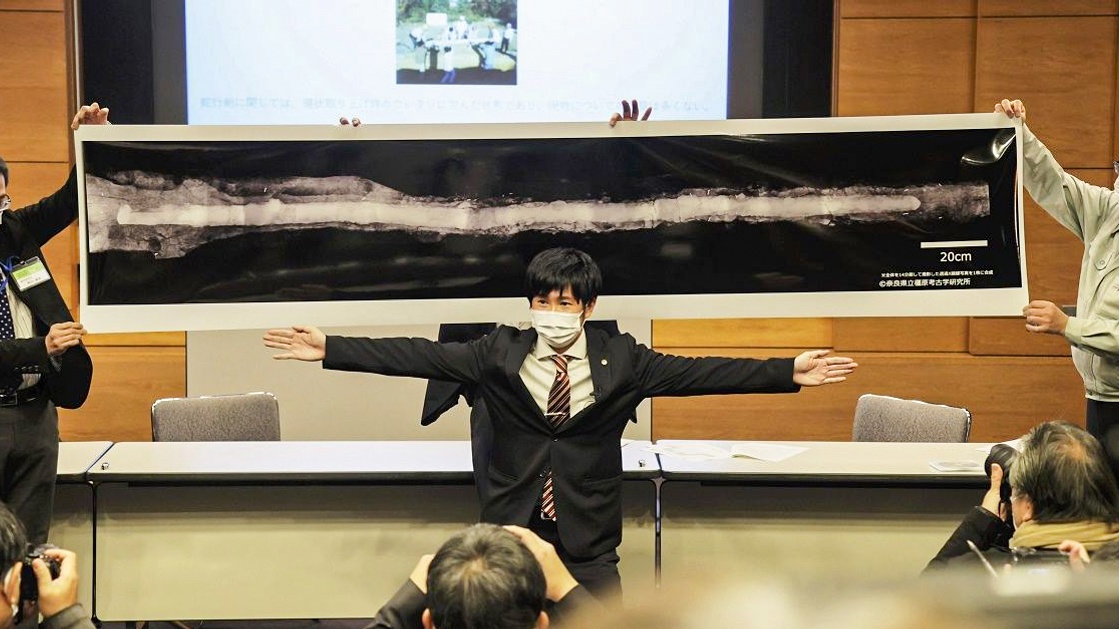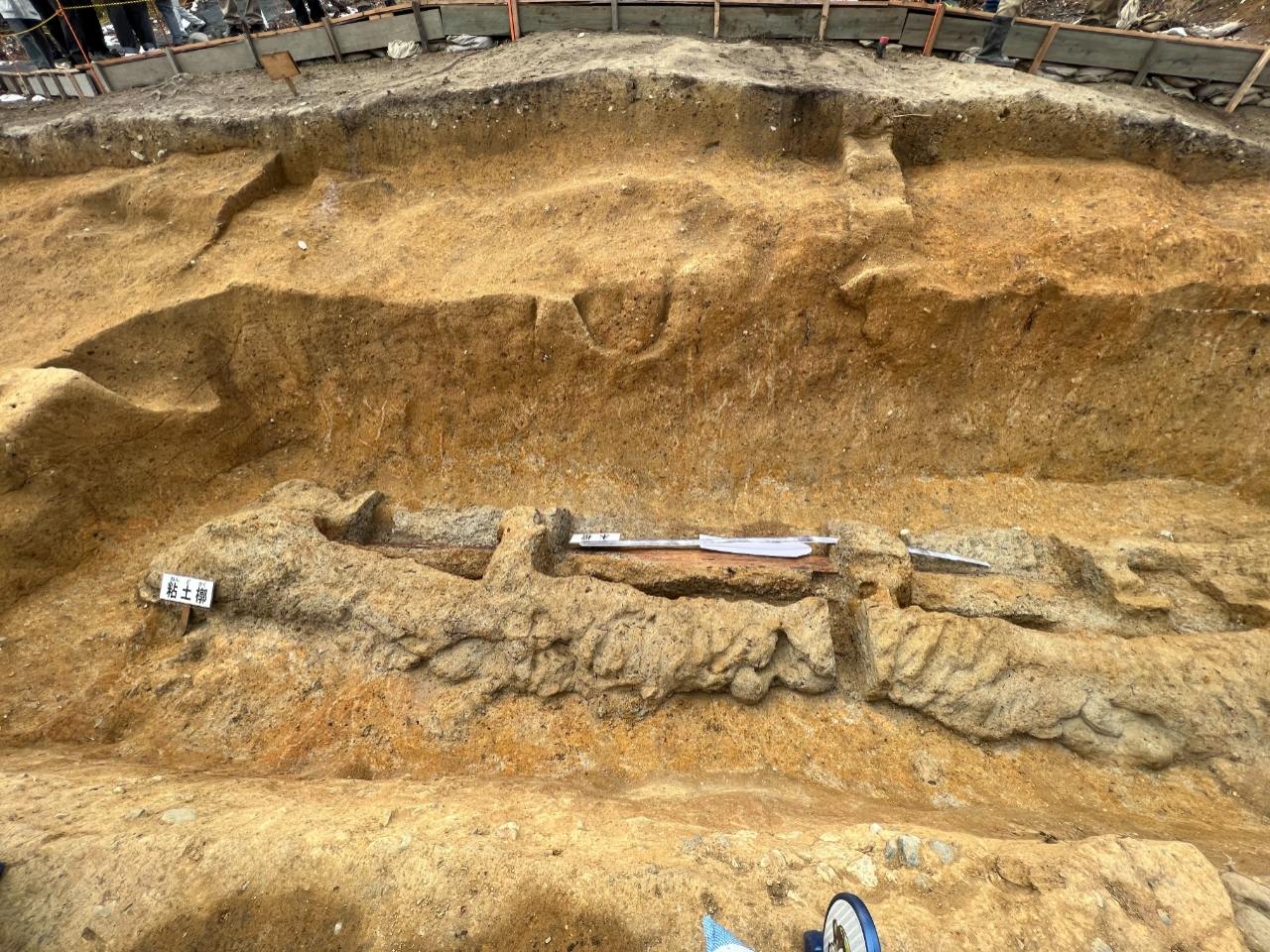The discovery of ancient artifacts is always an exciting event for archaeologists and history enthusiasts. In November 2022, a remarkable discovery was made in the city of Nara, Japan. A massive seven-foot-long iron sword was found in a burial mound along with other archaeological treasures that date back hundreds of years. The city of Nara’s education board and Nara prefecture’s archaeological institute announced the discoveries on January 25.

The sword, known as a dakō sword and is estimated to be over 1,600 years old, and is considered to be a significant historical artifact from Japan’s history. Because of its wavy, snake-like appearance and the fact that it is so enormous, it is highly unlikely that it was ever used for self-defense but rather as a way of providing protection from evil after death.
The sword was buried along with a two-foot-wide, one-foot-tall shield-shaped mirror weighing 124 pounds, thought to be a daryu mirror, which was also used to ward off evil spirits. The combination of these items may indicate that the individual they were alongside was important in military and ritualistic matters, Nara University archaeology professor Naohiro Toyoshima told Japanese Kyodo News.
“These swords are prestigious objects of high society,” archaeologist and ancient Japanese sword expert Stefan Maeder told LiveScience.
These relics were found during excavations in the Tomio Maruyama burial mound, thought to have been built in the 4th century during the Kofun period, which lasted from 300 to 710 AD. The site is Japan’s largest circular burial mound, measuring 357 feet in diameter.

The blade is about 2.3 inches wide, but the partially remaining scabbard is about 3.5 inches wide due to the meandering shape, said the researchers in a statement from the Nara Board of Education and the city’s archaeological institute. “It is also the largest iron sword in Japan and the oldest example of a meandering sword.”
The mirror is the first of its kind to have been unearthed, but the massive sword is one of around 80 similar relics that have been discovered across Japan. The sword is, however, the largest specimen of its type, and is twice as large as the second-largest sword found in the country.

ArtNews reported that larger swords with the distinctive wavy shape of dakō swords are thought to have greater powers to protect against evil spirits, with the sword being so large that it was likely not meant for combat against people.
“These discoveries indicate that the technology of the Kofun period (300–710 AD) is beyond what had been imagined, and they are masterpieces in metalwork from that period,” Kosaku Okabayashi, the deputy director for Nara Prefecture’s Archaeological Institute of Kashihara, told Kyodo News.
These burial mounds are scattered all across Nara and the rest of Japan. They are called “kofun” after the Kofun era, which was the time period in which they were constructed. According to LiveScience, there might be as many as 160,000 of the mounds.
The discovery of the 1,600-year-old demon-slaying mega sword is an amazing archaeological find that sheds light on the ancient history of Japan.
Alongside other archaeological treasures, this discovery provides a unique glimpse into the lives and traditions of the people who lived hundreds of years ago. We look forward to learning more as further research is conducted on this remarkable find.




